If you've been following the supplement industry's sports nutrition niche, you'll know that we've seen the resurgence of some powerful plant extracts in the muscle building market. You'll also know that Chris Waldrum sold Inspired Nutraceuticals, and the company is now run by Landon Suggs, who explained his vision in Episode #096 of the PricePlow Podcast.
Inspired Nutraceuticals' LGND Plant-Based Anabolic Returns
Should you listen to the interview, you'll no doubt agree with us that Landon is an intense guy, in the best possible definition of the word. The good news is that Inspired's formulation approach matches his personal intensity. So, when it comes to something like muscle builders – one of the most serious and competitive categories in the supplement market – you'd expect Inspired to pull out all the stops.
And you'd be right.
The Inspired Nutraceuticals LGND muscle-building supplement was originally launched in 2016, and has seen a few versions over the years. This new release in 2023, however, is one of the most serious formulas we've seen in a long time. It's jam-packed with clinical doses of awesome anabolic agents and T-boosters, but also offers substantial fat burning support to maintain healthy body composition and hormone balance in the long run.
There's a lot to discuss, so let's jump right into the nitty gritty. But first, check the PricePlow news and deals:
Inspired Nutraceuticals LGND – Deals and Price Drop Alerts
Get Price Alerts
No spam, no scams.
Disclosure: PricePlow relies on pricing from stores with which we have a business relationship. We work hard to keep pricing current, but you may find a better offer.
Posts are sponsored in part by the retailers and/or brands listed on this page.
This area is reserved for Team PricePlow's upcoming Product Update video.
Subscribe to our channel and sign up for notifications so you catch it when it goes live!
Inspired LGND 2023 Ingredients
In a single 4-capsule serving of LGND Plant-Based Anabolic from Inspired Nutraceuticals, you get the following:
-
KSM-66 (as Organic Ashwagandha Extract) (Withania somnifera) (root) – 800 mg
Ashwagandha functions as an adaptogen, meaning it assists the body in maintaining hormonal equilibrium. An adaptogen can increase levels of a specific hormone when it's too low and decrease it when levels are too high. This unique context-dependent action makes adaptogens powerfully versatile tools for enhancing overall well-being and optimizing both mental and physical performance.
In a 2012 study, 64 adults showed a 28% reduction in serum cortisol levels after consuming 600 milligrams of KSM-66 organic ashwagandha extract for 60 days. Note, that's actually a smaller dose than what's used in LGND. What made this study particularly compelling was its use of both subjective and objective stress assessments – participants completed a questionnaire about their perceived stress levels and took a cortisol blood test.[1] KSM-66 was shown to positively impact both the questionnaire scores and subjects' cortisol levels.[1]
Ashwagandha and Testosterone
Other research has demonstrated that ashwagandha's impact on cortisol is big enough to positively affect male fertility.[2]
Given the link between sperm quality and hormones, it probably won't surprise you to learn that ashwagandha's anti-cortisol effect makes it a potent testosterone booster as well. Since cortisol and testosterone exert opposing effects, reducing one usually increases the other, and ashwagandha research consistently shows double-digit percentage point increases in serum testosterone. One study, for instance, demonstrated increases ranging from 14% to 40%,[3] while another found a rise of 10% to 22%.[4]
Nor is ashwagandha's capacity to increase testosterone confined to only men with a low testosterone baseline. Ashwagandha has been shown to also increase testosterone levels in active, young, and healthy men — a population that typically has robust testosterone production to begin with.[4]
Possibly related to its testosterone-boosting effects is ashwagandha's ability to enhance athletic performance. Benefits such as increased power output,[5] enhanced VO2max,[5] and improved one-rep max[4] have been observed with ashwagandha supplementation.
Why Choose KSM-66?
NutraBio's KSM-66 sets the gold standard for ashwagandha, thanks in large part to the rigorous independent laboratory testing conducted on each production batch. When it comes to optimizing hormone levels, eliminating endocrine-disrupting compounds is crucial, making purity a top concern in testosterone-boosting supplements like ashwagandha extract. That's why we wholeheartedly endorse the use of KSM-66 in LGND, rather than opting for a mysterious, untested ashwagandha extract.
To delve deeper into what makes KSM-66 so exceptional, you can explore our article on NutraBio KSM-66 Ashwagandha: Trusted and Tested Ashwagandha for Everyone.
-
Phytosterol (as Ajuga turkestanica extract (whole herb) and Smilax extract (Similax sieboldii L.) (root) – 500 mg
Ajuga turkestanica is a rising star in the anabolic nutraceutical market. It's rich in phytoecdysteroids, a class of phytochemicals that help orchestrate growth, development, and reproduction of the plants in which they naturally occur.
Phytoecdysteroids resemble the human hormone testosterone in their structure and function. like testosterone, they're synthesized from cholesterol.[6] More specifically, A. turkestanica is the industry source for turkesterone, a phytoecdysteroid with exceptional anabolic effects, even compared to other bioactive constituents in its class.
When we're talking about turkesterone, there's sometimes a little terminological confusion. That's because the word "turkesterone" is commonly used to refer to either the whole-plant A. turkestanica extract, or the phytoecdysteroid molecule turkesterone, which is just one constituent part of that extract. That's because A. turkestanica extracts are almost always standardized for the turkesterone molecule, and are thus referred to as turkesterone for short.
What we like about LGND's use of Phytosterol is that it's not marketed here as turkesterone. This is honest and it doesn't short-change the power of A. turkestanica, a plant that naturally contains many additional powerful phytoecdysteroids.
A. turkestanica's ample phytoecdysteroid arsenal
There are eight known phytoecdysteroids in A. turkestanica.[7] Ecdysterone and turkesterone are only two. It's possible there may even be more than eight. Researchers believe that additional studies may allow for the isolation of additional bioactive compounds in A. turkestanica.[7]
Among the many phytoecdysteroids that occur naturally in A turkestanica, several have been shown to inhibit estrogen by blocking its action on the estrogen receptor. Because this increases the body's serum testosterone-to-estrogen ratio, it can ultimately have anabolic effects.[8,9]
One study from 2014 found that rats who took phytoecdysteroids experienced a significant drop in their blood estrogen level.[9]
Whenever we're talking about a compound that can modulate hormone signaling, we want to be sure that it won't disrupt the body's natural endogenous hormone production or equilibrium. That's why it's remarkable that, despite their structural and functional similarity to androgens, phytoecdysteroids have a relatively low affinity for androgen receptors[8,10] and don't cause the downregulation of natural testosterone synthesis from anabolic steroid use.
To understand how this can be the case, let's talk about the best-researched phytoecdysteroid, ecdysterone (sometimes referred to as 20HE).
This discussion is a great illustration of phytoecdysteroids' general properties and, relevant to Phytosterol, since ecdysterone does occur naturally in A. turkestanica.
Ecdysterone/20HE
The many animal studies on ecdysterone have done a great job illustrating how the phytoecdysteroid can decrease serum estrogen while increasing serum insulin-like growth factor 1 (IGF-1), leading to bigger muscle fibers.[8,9]
A research review from the late 90s echoed conclusions of individual studies, finding that ecdysterone possessed significant anabolic properties in rats. The same review looked at turkesterone as well and, remarkably, presented some evidence that ecdysterone and turkesterone can even outperform anabolic steroids![11]
But besides animal studies, there have been lots of human studies on ecdysterone – one great example is a 2019 study on German college students that demonstrated ecdysterone's dose-dependent anabolic properties.[12]
The results of this experiment were so striking that, in their closing remarks, the authors proposed that the World Anti-Doping Agency should ban ecdysterone from use by competitive athletes![12] Other researchers have echoed this conclusion.[8]
Turkesterone: not as well researched, but insane potential
As remarkable as ecdysterone is – and remember, it occurs naturally in the whole-plant extract of A. turkestanica – there's a possibility that turkesterone may be even more anabolic!
Unfortunately, compared to ecdysterone, the research on turkesterone is still quite limited. To understand why people have been making such a big deal out of this phytoecdysteroid, we have to talk about a 1998 study conducted by the Academy of Sciences in Uzbekistan.
In that study, a variety of anabolic agents were given to exercising rats in order to assess the impact each substance had on muscle growth. The results were astonishing: Turkesterone led to greater muscle growth than did methandrostenolone, an anabolic steroid commonly known as dbol.[13] The fact that dbol ranks among the most potent anabolic steroids available really underscores the incredible potential of turkesterone.
We say potential because, as amazing as this study was, it has not yet, to our knowledge, been replicated. And, unfortunately, when it comes to turkesterone, that's pretty much all the research we have to discuss. But given the enormous volume of evidence supporting ecdysterone, you can rest assured that this ecdysterone-containing A. turkestanica extract will work.
Smilax extract is usually standardized for laxogenin, a brassinosteroid that occurs naturally in a few types of plants from the Smilax genus, including the Smilax sieboldii.[4]
About brassinosteroids
But A. turkestanica extract is only one part of Phytosterol. This ingredient also contains an extract of Smilax (Similax sieboldii).
Smilax is rich in brassinosteroids, another category of plant-derived steroid molecules that are very close in structure and function to phytoecdysteroids.[14] Like phytoecdysteroids, brassinosteroids help coordinate growth and development in plants,[15] and are so named because they were first isolated from the genus Brassica,[16] which includes broccoli, cauliflower, brussel sprouts, and kale.
Much like phytoecdysteroids, brassinosteroids exert significant anabolic effects without the hormonal downregulation that can be caused by anabolic steroid use.[17]
Brassinosteroids are also currently legal inside and outside of athletic competition.
Animal studies show that laxogenin, one of the better-known brassinosteroids and chief bioactive constituent of smilax, can promote muscle growth while causing minimal side effects of any kind.[17,25] It also appears to be a great anti-catabolic agent, meaning it helps spare existing muscle tissue from being catabolized (broken down).[17,25]
Laxogenin may also accelerate recovery from exercise, decrease serum cortisol, and reduce systemic inflammation.[26]
-
Longjack Extract 100:1 (Euroycoma longifolia) (root) – 300 mg
Longjack, sometimes referred to as tongkat ali, has been one of the industry's go-to testosterone boosters for at least a decade. It's long been recognized as an aphrodisiac in various systems of folk medicine, a benefit that's been validated in recent years by peer-reviewed research studies.
One of these studies, published in 2012, concluded that longjack can improve sperm motility and libido by 44% and 14%, respectively.[27] Note that this study used a 300 milligram daily dose, the same amount used in LGND.
A 2022 meta-analysis on longjack, which included five different randomized controlled trials, found that most men can expect a significant boost in testosterone production from longjack supplementation. Importantly, this result applied equally to hypogonadal (low-testosterone) and healthy men alike.[28]
However, research so far is mixed – a 2014 randomized controlled trial found no effect on urinary testosterone-to-estrogen (T:E),[29] and an earlier, 2017 meta-analysis concluded that more research is needed before longjack can be established as a testosterone booster.[30]
Other benefits
Longjack also contains powerful antioxidants and can have anti-anxiety, anti-diabetic, and anti-proliferative effects.[31]
-
3,3'-Diindolylmethane (DIM) – 150 mg
Diindolylmethane (DIM) is a metabolite of indole-3-carbinol (I3C), a compound that's found in cruciferous vegetables.[32] The human body naturally produces DIM from I3C in the gut,[33,34] but direct supplementation has been shown to benefit health in a number of ways.
First, DIM is a potent inhibitor of aromatase, an enzyme that converts testosterone into estradiol estrogen.[33] This is thanks to DIM's affinity for the aryl hydrocarbon receptor (AhR),[35] which exerts an antagonistic effect on estrogen receptors when activated. By inhibiting aromatase through the use of supplements like DIM, it's possible to improve the body's testosterone-to-estrogen ratio, which has masculinizing and anabolic effects.
Second, DIM can also increase the production of healthy estrogens over harmful ones. More specifically, DIM has been shown to upregulate 2-hydroxylated estrogens while downregulating 16-hydroxylated and 4-hydroxylated forms.[36-39] Since 2-hydroxylated estrogens are associated with a wide range of positive health effects,[40,41] the opposite is the case for 16- and 4-hydroxylated forms.
The 2-hydroxylated estrogens are associated with, among other things, reduced body fat and increased muscle mass,[42] two effects that you definitely want to see from an anabolic supplement like LGND.
-
PurpleForce Purple Tea Extract (Camellia sinensis) (leaf) – 100 mg
PurpleForce purple tea extract is a unique strain of Camellia sinensis deliberately cultivated to contain high concentrations of anthocyanins, which are a group of pigment phenols known for their potent antioxidant and anti-inflammatory properties. Anthocyanins naturally occur in berries and beets and exhibit red, blue, or purple coloration.
Enhancing endurance
Research has demonstrated that regular green and black tea variants, both derived from Camellia sinensis, have the ability to increase nitric oxide (NO) synthesis by enhancing the activity of endothelial antioxidant compounds.[29] Since elevated NO levels are linked to improved athletic performance, it's reasonable to expect similar effects from purple tea. After all, purple tea is essentially ordinary true tea, but infused with anthocyanins. PurpleForce is relatively new, so while research specific to this beverage is limited, preliminary studies seem to support that hypothesis.
In one randomized, double-blind, placebo-controlled study, participants who received PurpleForce had lower serum levels of lactate dehydrogenase following exercise. Given that lactate dehydrogenase is responsible for breaking down lactic acid, this decreased physiological demand for lactic acid metabolism suggests that the subjects also had reduced levels of lactic acid itself.[43]
PurpleForce is a novel Purple Tea Extract that contains more bioactive constituents than other forms of tea, namely the patented AMPK-boosting GHG, which can lead to increased cellular energy for greater performance and body composition. It's distributed by Maypro Industries and developed by Oryza Oil and Fat Chemicals Co. Ltd.
This matters for athletic performance because lactic acid accumulation in muscle tissue contributes to muscular fatigue. Thus, minimizing lactic buildup can increase athletic endurance. That's exactly what this study demonstrated. The Purple Force group showed greater athletic endurance compared to the placebo group.[43] Intriguingly, they also reported a greater willingness to engage in exercise,[43] a factor of considerable importance for adhering to an exercise regimen.
GHG and its impact on fat metabolism
Another distinctive feature of purple tea, compared the typical Camellia sinensis varieties, is that the former contains 1,2-di-Galloyl-4,6-Hexahydroxydipheno yl–D-Glucose, abbreviated as GHG.[44]
GHG has been shown to possess anti-obesity and anti-aging effects.[44] For instance, GHG appears to inhibit the absorption of dietary fat, as demonstrated in a 2015 study where subjects received 100 milligrams of purple tea extract daily for one month. At the conclusion of the study, those taking purple tea displayed significantly less subcutaneous fat in their abdominal and upper arm regions, accompanied by an increase in lean body mass.[45]
In another study where men simply drank purple tea while researchers monitored their health, improvements were observed in the following parameters:[46,47]
- BMI[46]
- Body weight[46]
- Body fat percentage[46]
- Abdominal fat[46]
- Waist and hip circumference[46]
Although research on this topic is still somewhat limited, the initial findings appear promising.
According to Maypro Industries, the distributor of PurpleForce, this ingredient also has the potential to enhance the body's expression of AMPK.[47] AMPK is essentially an on-demand energy enzyme responsible for cranking up cellular metabolism, which can increase your calorie burn.[48]
Learn more about it in our article, "PurpleForce: AMPK-Boosting Purple Tea Extract with Patented GHG®".
-
4',5,7,-Trihydroxyflavone (Apigenin) – 50 mg
Apigenin is a flavonoid that can activate benzodiazepine receptors, leading to a state of relaxation and reduced anxiety.[49] In fact, it's been proposed that apigenin is the bioactive constituent that's responsible for chamomile's sedative effects.,[50,51] a well-known over-the-counter sleep aid frequently discussed on the PricePlow Blog.
While chamomile extracts are sometimes standardized for apigenin content, Inspired has opted for pure apigenin. This is a wise decision, considering that chamomile contains approximately 1% apigenin by weight. To achieve the clinical, 50-milligram dose of apigenin, you'd need to take about 6 grams of whole chamomile — [51] an impractically large dose.
Apigenin: an aromatase inhibitor
While apigenin's anxiolytic and sleep-promoting effects are of potential value to anyone, it's in LGND because of its ability to increase fat burning and and improve metabolic health.
It is relatively common knowledge that being overweight can upregulate aromatase,[52] an enzyme that converts androgens (such as testosterone) into estradiol (a potent form of estrogen).[53]
What is discussed far less frequently is the bidirectional relationship: elevated estrogen levels can also contribute to unwanted weight gain.[54,55]Some theorists even suggest that estrogen dominance may be the primary cause of obesity.[55]
In light of this, it's reassuring to know that apigenin is a potent natural aromatase inhibitor.[56]
Aromatase-inhibiting supplements are especially valuable in today's world where estrogen dominance is a growing public health burden.[57] Unfortunately, our environment is increasingly filled with synthetic xenoestrogen compounds, which mimic the actions of natural estrogens by activating the same estrogen receptors as endogenous estrogens.[58]
While apigenin's aromatase-inhibiting effects may not rival those of pharmaceutical aromatase inhibitors, a little extra inhibition of aromatase is generally considered beneficial. That being said, it is possible to overdo estrogen downregulation, so it's essential to consult your doctor if you're unsure where your estrogen levels fall on the physiological spectrum.
-
EpiFlower (as Epimedium Extract std. 20% Icariins) (Epimedium sagittatum) (aerial) – 50 mg
"Horny goat weed" (HGW) is the informal name for several herbs in the Epimedium genus.[59]
Epimedium plants have a longstanding history in traditional Chinese medicine for addressing poor sexual function.[60] They are believed to enhance libido, increase arousal, and potentially influence hormonal balance.
Be sure to check out the latest pre-workout from Inspired in DVST8 DARK
Modern scientific research has corroborated these assertions by identifying icariin as the primary bioactive compound in HGW. Icariin is a known phosphodiesterase-5 (PDE-5) inhibitor, a class of vasodilating drugs that specifically enhance blood circulation in small blood vessels, including those surrounding penile tissue.[61-64]
Icariin also upregulates endothelial nitric oxide synthase (eNOS),[65,66] an enzyme responsible for arterial nitric oxide (NO) production. Given that increased NO is an important trigger for erections in men,[67] the augmentation of NO production can lead to improved sexual function.
In studies involving rats, icariin has been observed to boost testosterone production, mimic the effects of testosterone, and protect the gonads and penile tissue from damage caused by toxic substances.[68]
Besides improving androgen signaling, icariin also seems to possess anabolic and anti-catabolic effects,[69] which isn't terribly surprising since these are also properties of androgens themselves.
Although human evidence on icariin's ability to build muscle is currently lacking, in vitro and and animal studies have demonstrated that icariin can downregulate genes associated with muscular atrophy, while activating key anabolic pathways such as insulin-like growth factor 1 (IGF-1).[70,71]
Icariin (ICA) significantly increased testosterone synthesis in male rats – even more than zinc gluconate (G-Zn). A complex of ICA and zinc (ICA-Zn) boosted T even further than either supplement alone.[72]
Perhaps the most remarkable icariin study to date, published in 2022, found that bilaterally orchidectomized rats – that is, rats who had both testicles removed – were partially protected from muscle wasting by icariin supplementation.[73] This implies that, much like phytoecdysteroids and brassinosteroids, icariin activates an anabolic mechanism that is functionally independent of androgen signaling.
Another study found that, besides significantly increasing exercise tolerance, as measured by a forced swimming test, icariin also increased serum testosterone level in rats.[72]
-
AstraGin (as Panax notoginseng (root) and Rosa roxburghii (fruit)) – 50 mg
AstraGin, developed by NuLiv Science, is a patented bioavailability-enhancing ingredient.[74-78] Its mechanism of action is to facilitate intestinal cells' synthesis of adenosine triphosphate (ATP), which is fuel they use to absorb nutrients from the food and supplements you consume.
By enhancing the function of intestinal cells, AstraGin also increases the absorption and utilization of whatever you take in conjunction with it – which in this case, is every other ingredient in the LGND formula. This means that you get more bang for every buck you spend on LGND, thanks to AstraGin.
Consistent use of AstraGin may also improve intestinal health over time.[79]
-
Bioperine (as Black Pepper Extract) (Piper nigrum) (fruit) – 5 mg
Piperine, the primary bioactive constituent of BioPerine black pepper extract, inhibits stomach enzymes that break down nutrients. As a result of piperine ingestion, nutrients that would ordinarily be degraded prematurely can transit your stomach intact and be absorbed in your bloodstream where they have bioactive effects.[80]
Piperine is also an antioxidant,[81] can also make your cells more insulin sensitive by upregulating glucose transporter 4 (GLUT4),[82] and helps prevent fatty tissue from building up in your liver.[83]
Dosage and Directions
Take four capsules daily. If you do an AM/PM supplement split, feel free to split 2 capsules in each dose. On workout days, however, you can also consider all four capsules pre-workout to get some of the additional pump effects from EpiFlow icariin.
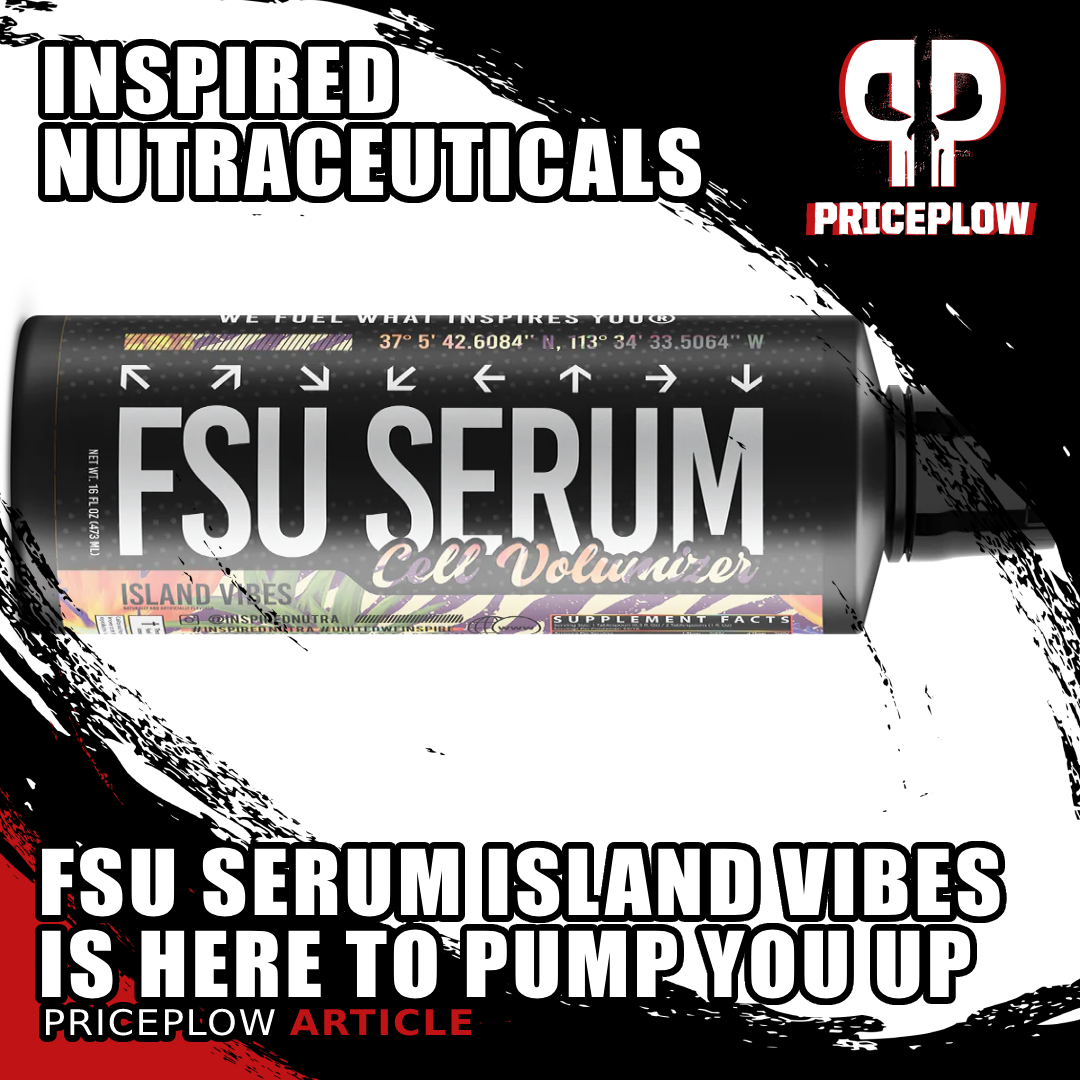
Inspired Nutra FSU Serum is sure to get you pumped up!
Conclusion: Landon Suggs' Inspired Nutra is Playing for Keeps
Besides T-boosting mainstays like longjack and ashwagandha, Inspired brings some ingredients that are more out of left field, like apigenin and icariin. We especially like seeing Phytosterol – pairing phytoecdysteroids and brassinosteroids in the same ingredient makes a lot of sense given their similar structure and function.
We're extremely excited with what Landon and his team are doing at Inspired Nutra -- FSU Serum and DVST8 Dark were just the beginning. Get signed up for our Inspired Nutraceuticals news below - we know there's a ton more stuff coming, and it's all extremely novel:
Inspired Nutraceuticals LGND – Deals and Price Drop Alerts
Get Price Alerts
No spam, no scams.
Disclosure: PricePlow relies on pricing from stores with which we have a business relationship. We work hard to keep pricing current, but you may find a better offer.
Posts are sponsored in part by the retailers and/or brands listed on this page.
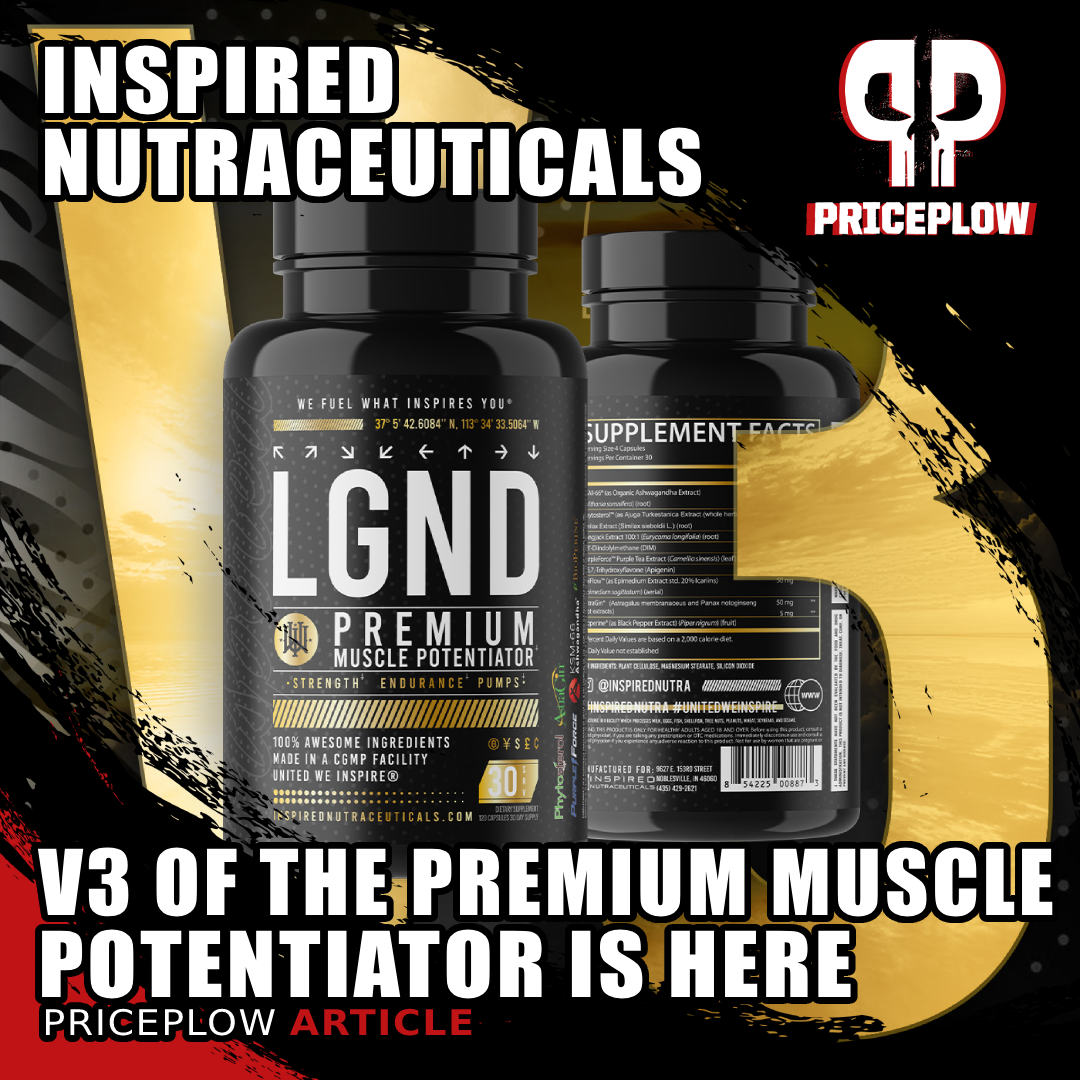
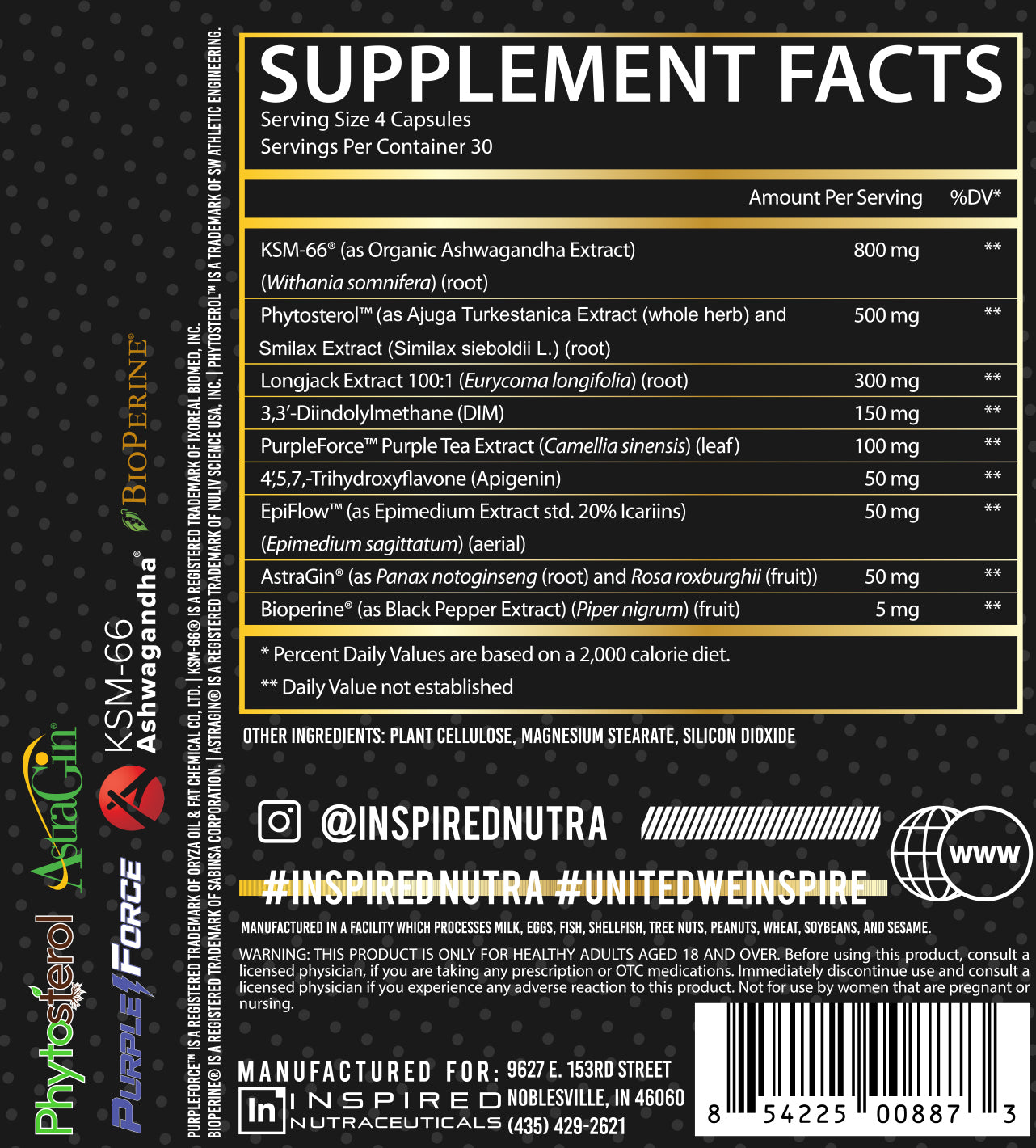

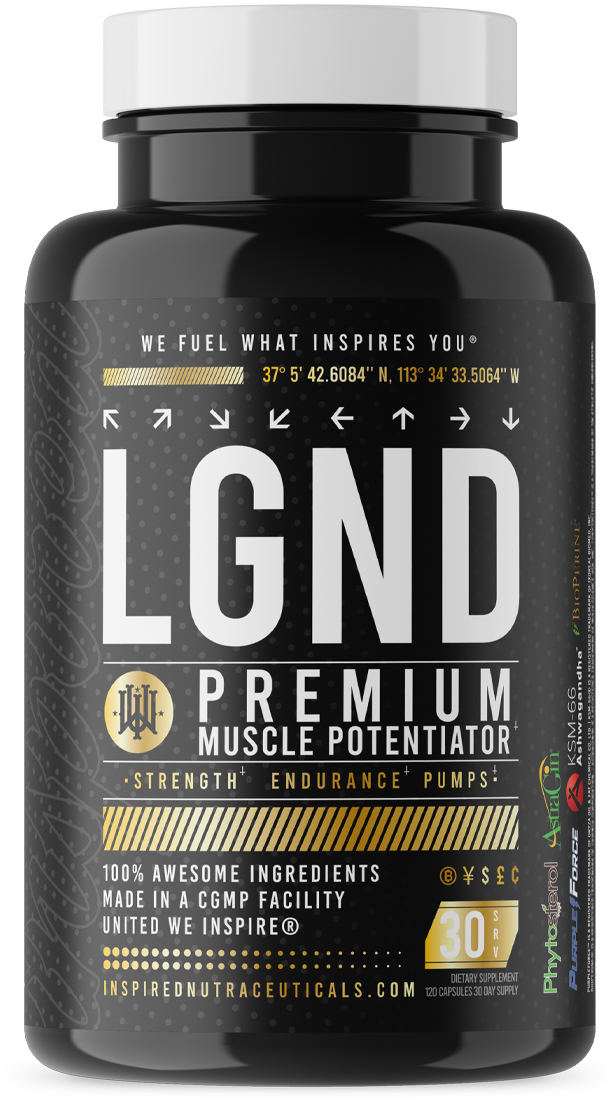
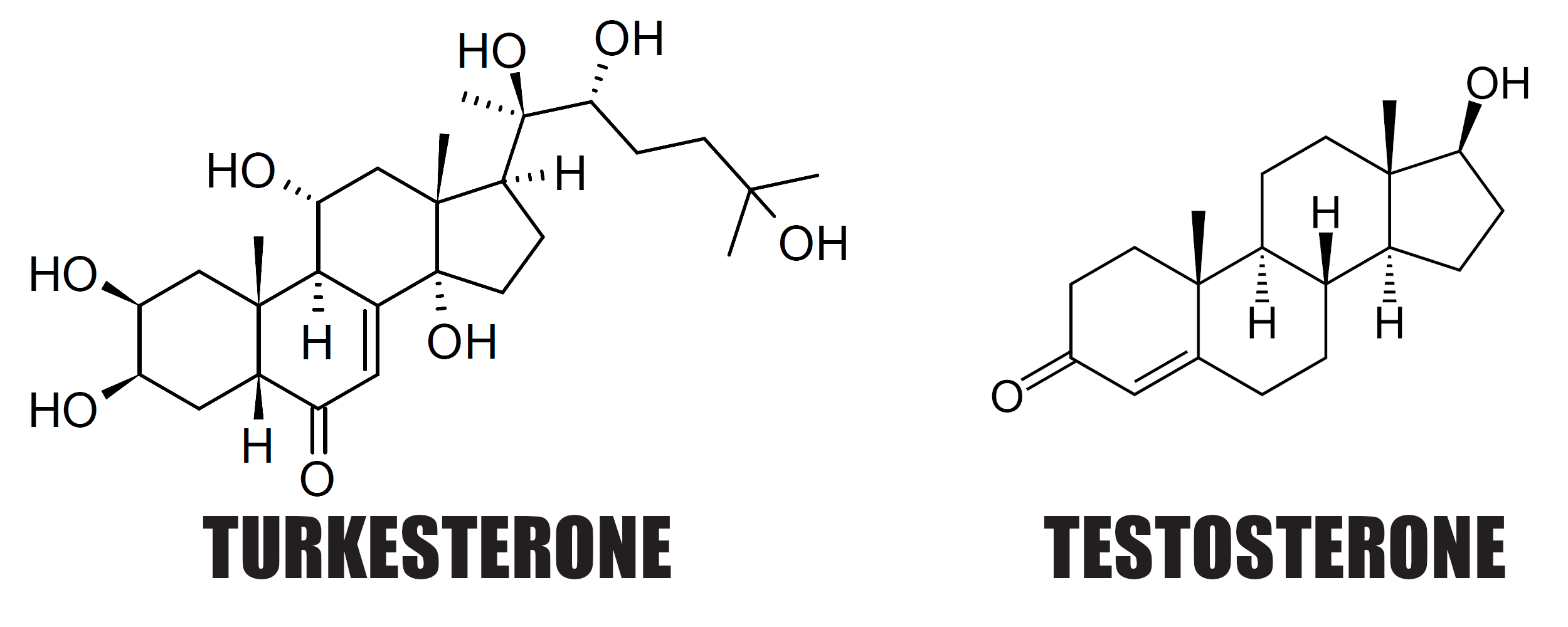


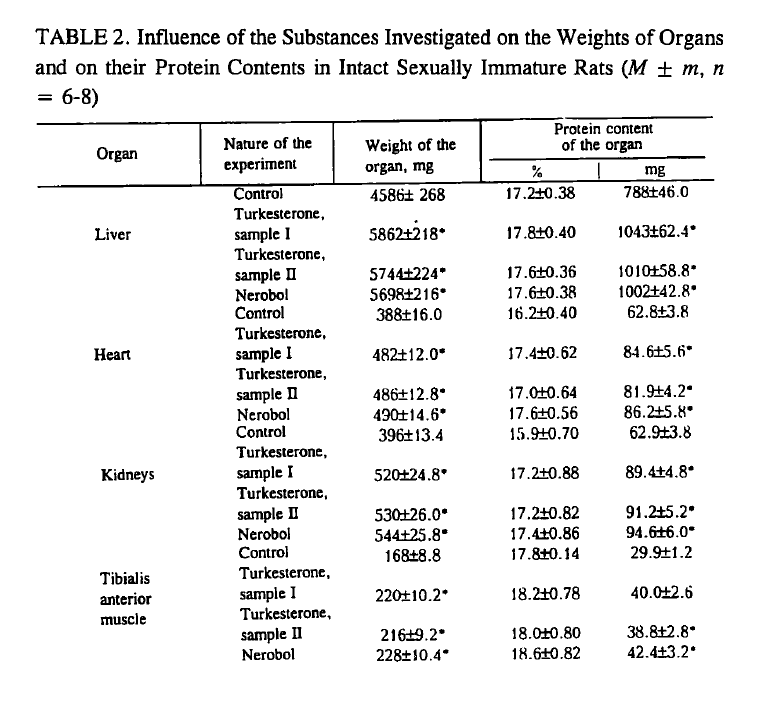
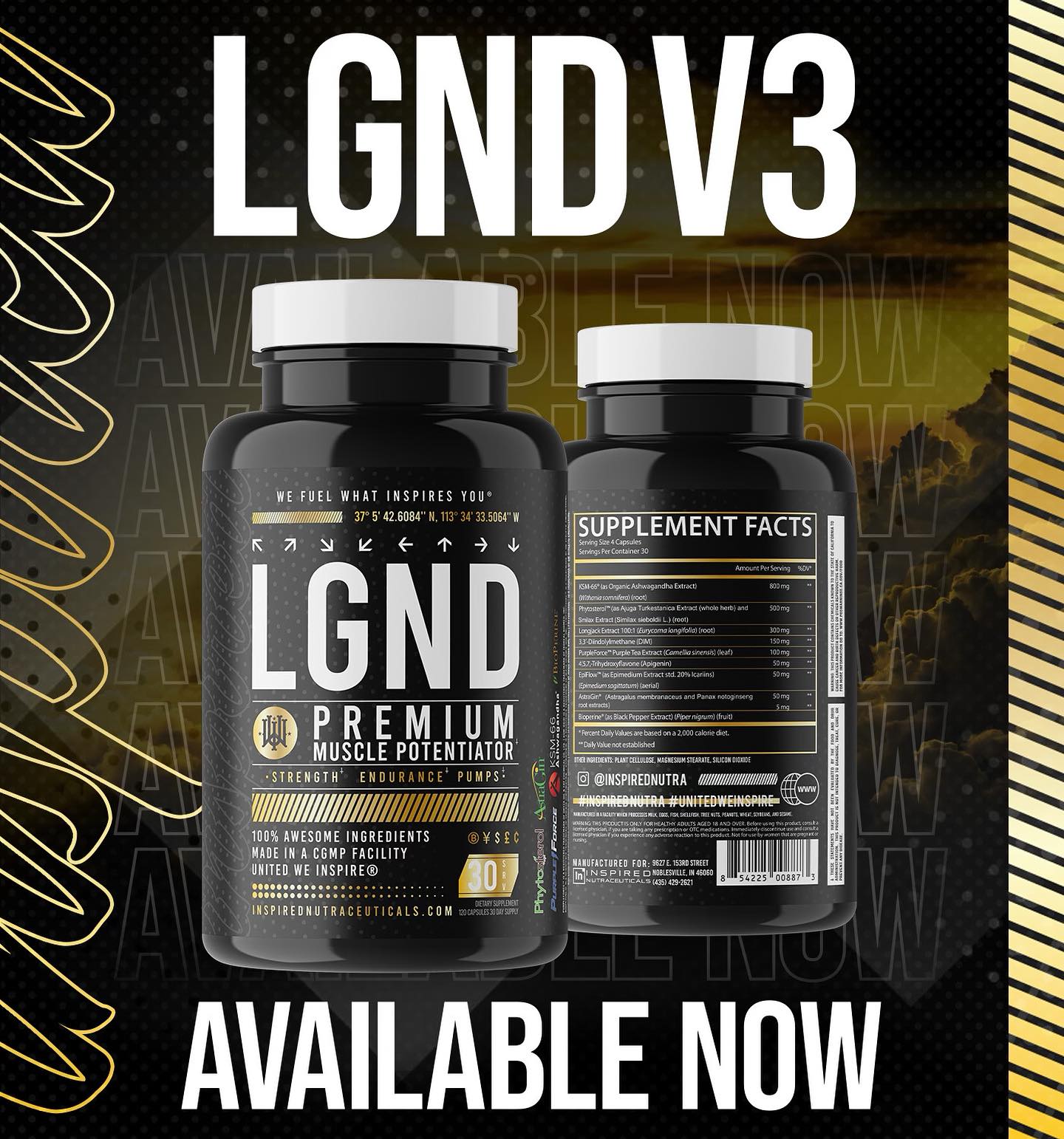

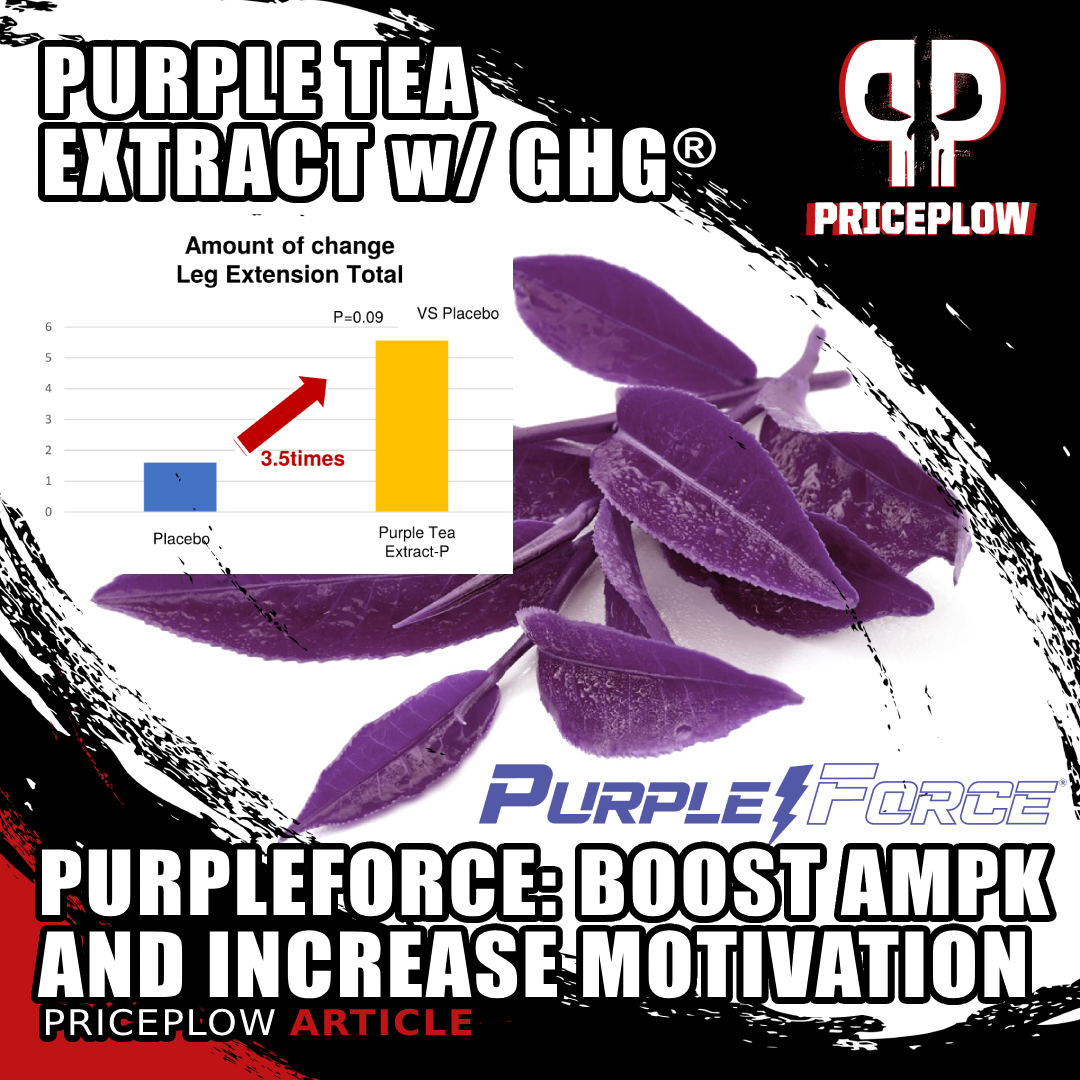
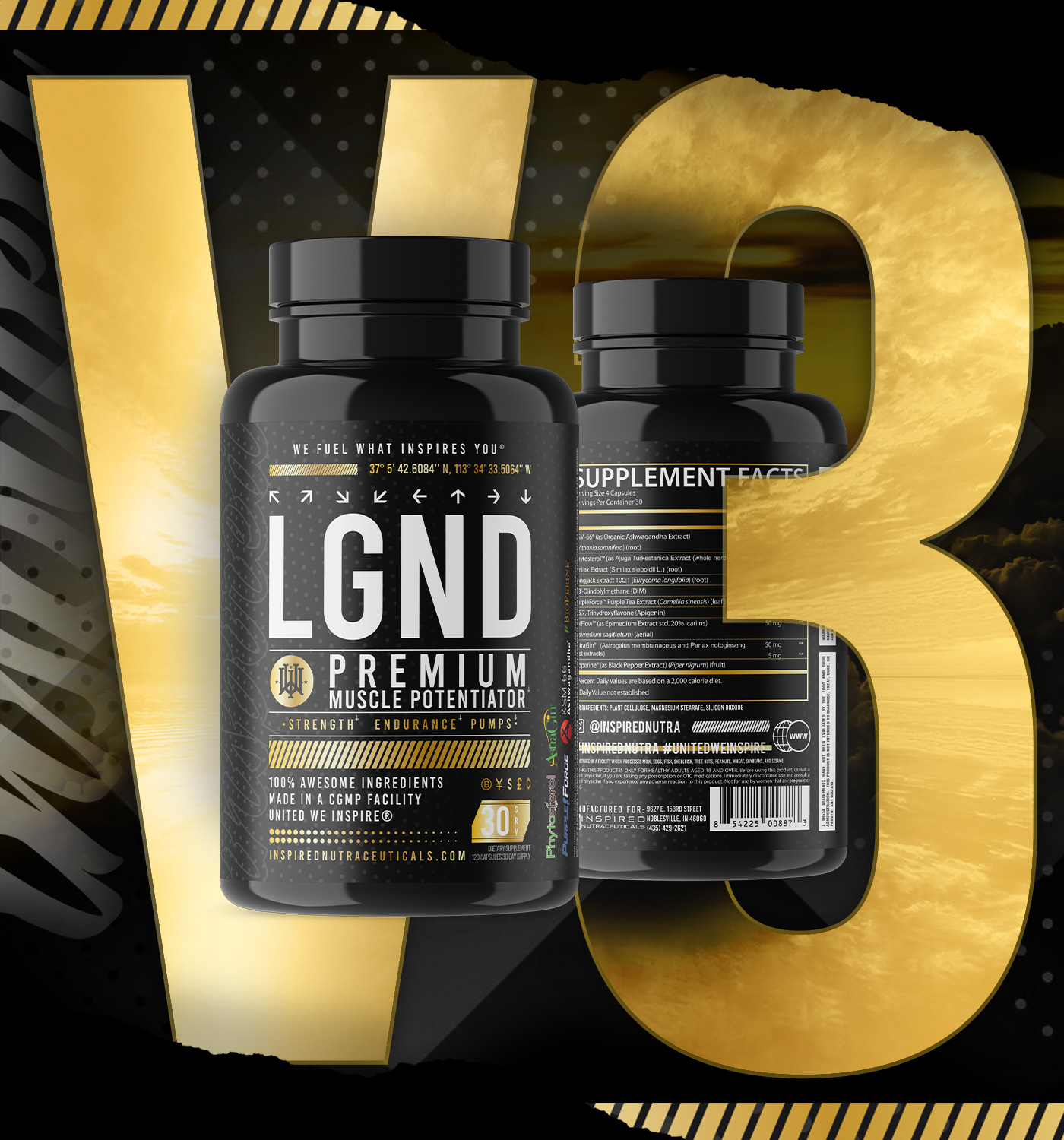
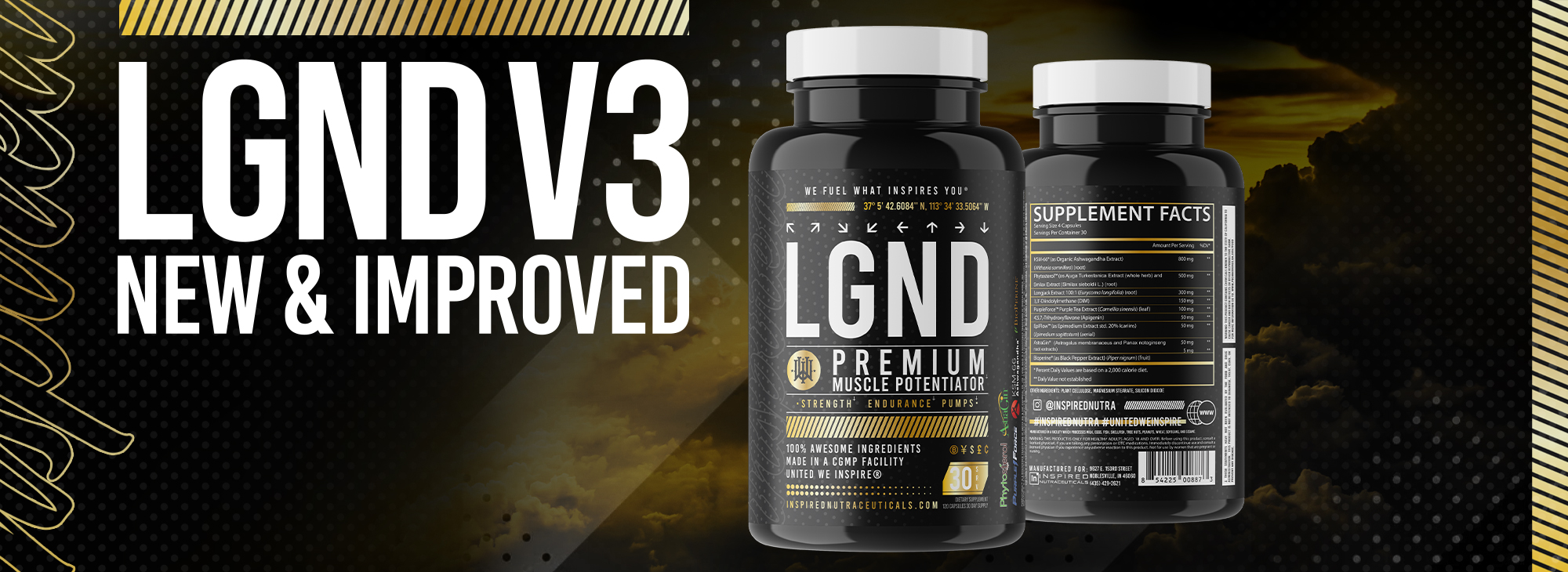
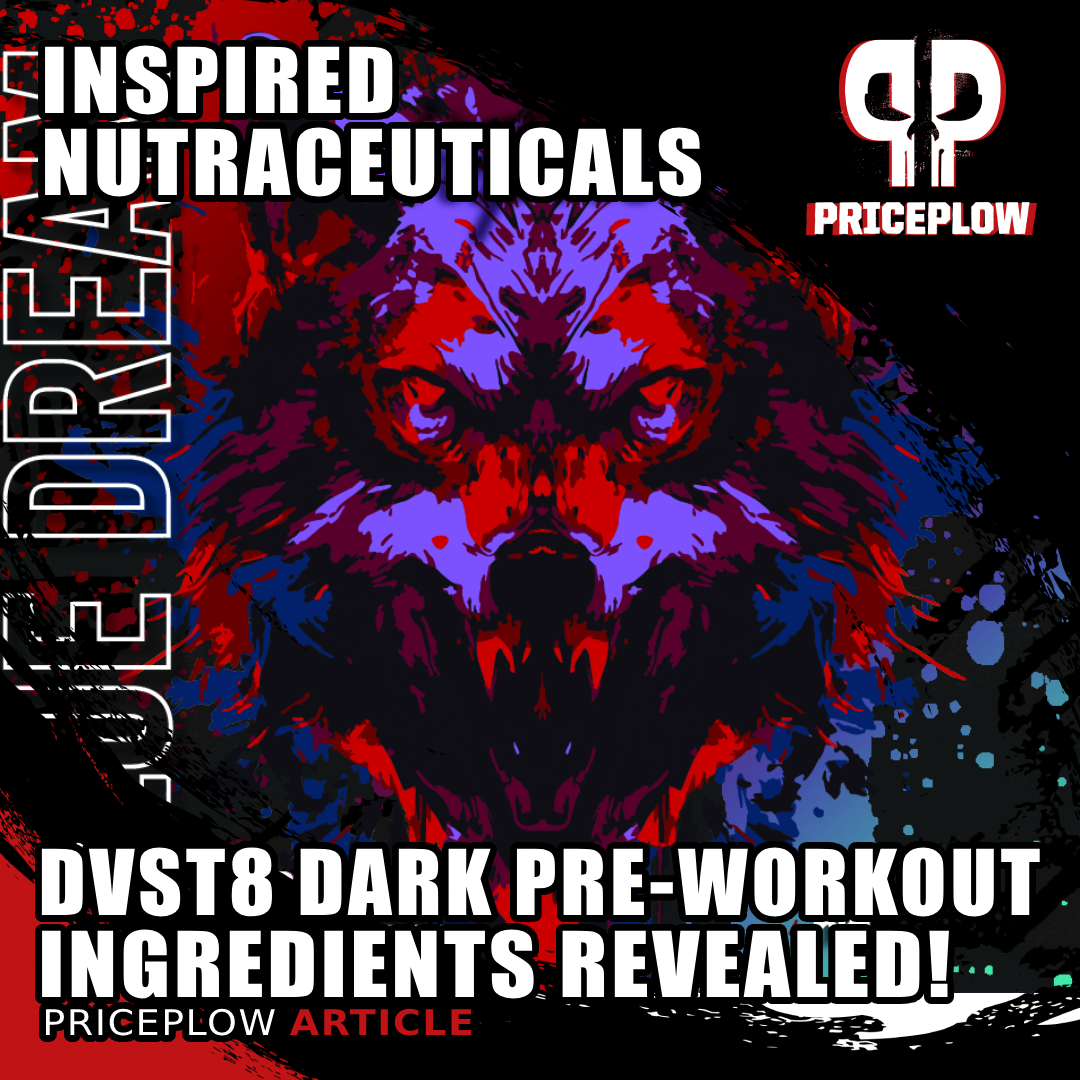
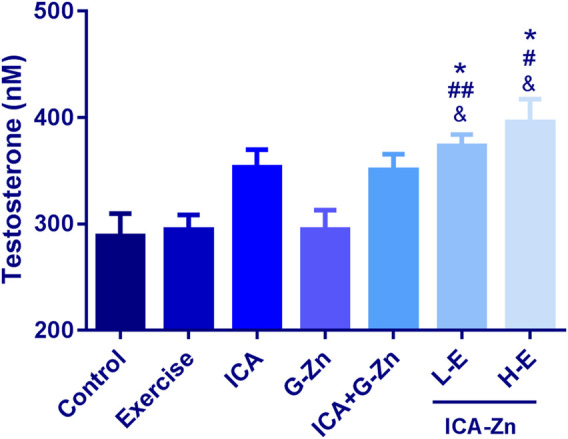
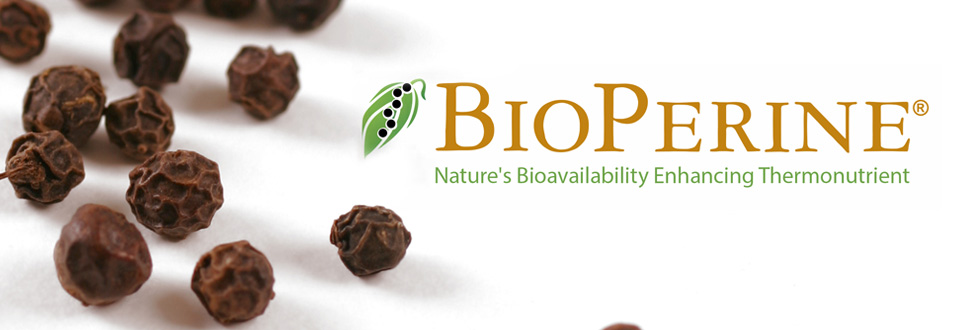


Comments and Discussion (Powered by the PricePlow Forum)